Service Alert
Le 1 juillet, Fête du Canada
À l’occasion de la Fête du Canada, le CAÉB sera fermé le mardi 1 juillet. Les heures d’opération régulières reprendront le mercredi 2 juillet. Nous vous souhaitons un bon congé!
À l’occasion de la Fête du Canada, le CAÉB sera fermé le mardi 1 juillet. Les heures d’opération régulières reprendront le mercredi 2 juillet. Nous vous souhaitons un bon congé!
Articles 161 à 180 sur 1499734
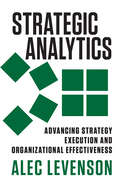
Par Alec Levenson. 2015
More than ever, data drives decisions in organizations—and we have more data, and more ways to analyze it, than ever.…
Yet strategic initiatives continue to fail as often as they did when computers ran on punch cards. Economist and research scientist Alec Levenson says we need a new approach. The problem, Levenson says, is that the business people who devise the strategies and the human resources people who get employees to implement them use completely different analytics. Business analytics can determine if operational priorities aren't being achieved but can't explain why. HR analytics reveal potentially helpful policy and process improvements but can't identify which would have the greatest strategic impact. This book shows how to use an integrated approach to bring these two pieces together. Levenson presents a thorough and realistic treatment of the reasons for and challenges of taking an integrated approach. He provides details on the different parts of both enterprise and human capital analytics that have to be conducted for integration to be successful and includes specific questions to ask, along with examples of applying integrated analytics to address particular organizational challenges.Effective analytics is a team sport. Levenson's approach allows you to get the deepest insights by bringing people together from both the business and HR perspectives to assess what's going on and determine the right solution.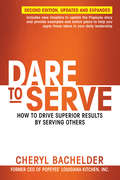
Par Cheryl A Bachelder. 2018
The expanded and revised edition of Dare to Serve answers the question How do you transform an ailing company into…
an industry darling? Adopt servant leadership!In this updated edition of Dare to Serve, former Popeyes CEO Cheryl Bachelder shows that leading by serving is a rigorous and tough-minded approach that yields the best results. When she was named CEO of Popeyes in 2007, the stock price had slipped from $34 in 2002 to $13. The brand was stagnant, the team was discouraged, and the franchisees were just plain angry. Nine years later, restaurant sales were up 45 percent, restaurant profits had doubled, and the stock price was over $61. Servant leadership is sometimes derided as soft or ineffective, but this book confirms that challenging people to reach a daring destination, while treating them with dignity, creates the conditions for superior performance. The second edition of this bestselling book includes Bachelder's post-Popeyes observations and new examples of how you can switch your leadership from self to serve. Ever engaging and inspirational, Bachelder takes you firsthand through the transformation of Popeyes and shows how anyone, at any level can become a Dare-to-Serve leader.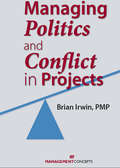
Par Brian Irwin PMP, MSM. 2008
Managing Politics and Conflict in Projects is an easy-to-read, no-nonsense guide that walks you through the "soft" issues of project…
management, including communicating, negotiating, and influencing skills that are vital to your project success. Understand your organization's political climate and culture and ascend the corporate ladder to the next level as a project manager. Learn how to deal with political issues requiring complex organizational and interpersonal skills, using valuable review points, tips, and a fictional narrative illustrating the book's main points. •Improve and develop your leadership, interpersonal, and communications skills•Negotiate your political environment•Acknowledge and overcome challenges inherent in project management•Enhance your career by effectively utilizing politics and conflict•Recognize and interpret the barriers of communication•Be prepared to enter into a negotiation•Overcome cultural challenges
Par Mal Warwick, Paul Polak. 2013
Right now the number of people living on $2 a day or less is more than the entire population of…
the world in 1950. These 2.7 billion people are not just the world’s greatest challenge—they represent an extraordinary market opportunity. By learning how to serve them ethically and effectively, businesses can earn handsome profits while helping to solve one of the world’s most intractable problems. The key is what Paul Polak and Mal Warwick call Zero-Based Design: starting from scratch to create innovative products and services tailored for the very poor, armed with a thorough understanding of what they really want and need and driven by what they call “the ruthless pursuit of affordability.”Polak has been doing this work for years, and Warwick has extensive experience in both business and philanthropy. Together, they show how their design principles and vision can enable unapologetic capitalists to supply the very poor with clean drinking water, electricity, irrigation, housing, education, healthcare, and other necessities at a fraction of the usual cost and at profit margins attractive to investors. Promising governmental and philanthropic efforts to end poverty have not reached scale because they lack the incentives of the market to attract massive resources. This book opens an extraordinary opportunity for nimble entrepreneurs, investors, and corporate executives that will result not only in vibrant, growing businesses but also a better life for the world’s poorest people.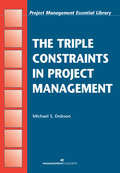
Par Michael S. Dobson PMP. 2004
From the novice to the most experienced and senior project manager, triple constraint issues are at the core of the…
most crucial decisions about a project. The Triple Constraints in Project Management explores the triangle of time, cost, and performance that bounds the universe within which every project must be accomplished – and shows how controlling the hierarchy of constraints can mean the difference between success and failure on virtually any project.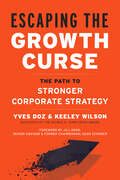
Par Keeley Wilson, Yves Doz. 2024
Sustainable company growth isn't just a pipedream. This 3-part blueprint is your guide to avoiding the traps that cause growth…
to stall.As companies mature, their underlying growth naturally slows—this is called the 'growth curse'. It's a pervasive problem that plagues companies, CEOs, and board members alike. In order to safeguard a company's future, a strategic form of governance in which the board plays a more active role on behalf of all stakeholders, must be activated.This book is comprised of 3 parts. First it shows companies how to identify the traditional traps that hinder growth. The second part provides companies with a blueprint for building their board, defining long-term strategy, and adjustments necessary to serve continued growth. The final part delves into the specific ways that the board and executives must collaborate in relation to strategic renewal.Reimagining the limits of growth and how companies are run as a consequence provides an escape from the 'growth curse' at last.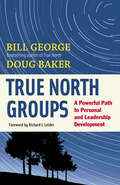
Par Bill George, Douglas M. Baker. 2011
The challenges we face these days are so great that we cannot rely entirely on ourselves, our communities, or our…
organizations to support us and help us stay on track. We need a small group of people with whom we can have in-depth discussions and share intimately about the most important things in our lives—our happiness and sadness, our hopes and fears, our beliefs and convictions. For the past thirty-five years, Bill George and Doug Baker have found the answer in what they call True North Groups. “At various times,” George and Baker write, “a True North Group will function as a nurturer, a grounding rod, a truth teller, and a mirror. At other times the group functions as a challenger or an inspirer. When people are wracked with self-doubts, it helps build their courage and ability to cope.” Drawing on recent research in psychology and sociology, George and Baker explain why True North Groups are so critical to helping us develop the self-awareness, compassion, emotional intelligence, and authenticity required to be inspired human beings and inspiring leaders. They cover every detail from choosing members, establishing norms, and dealing with conflicts to evaluating progress and deciding when it’s time to restructure. True North Groups provides a wealth of practical resources, including suggested topics for the first twelve meetings, advice on facilitating groups, techniques to evaluate group satisfaction, and much more. For the millions of people who are searching for greater meaning and intimacy in their lives, this book will help them to grow as leaders and as people—and to stay on course to their True North.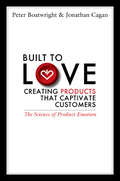
Par Jonathan Cagan, Peter Boatwright. 2010
Offers data-driven proof that products and services appealing to customer’s emotional needs outsell the competition Provides a clear method and…
set of tools to enable companies to develop high emotion products and services Includes case examples from a wide variety of industries Emotion is the single greatest lever in building enduring relationships with customers—it’s what makes them not just purchase a product or service, but get excited about it. Leading companies do more than produce things that work better. They address their customers’ emotional needs—they make them feel better. But this isn’t something you can add on after the fact. Your products and services must be built to love from the very start. This book shows you how. Peter Boatwright and Jonathan Cagan have worked on product and brand strategy with market leaders like Apple, Whirlpool, International Truck, PG&E, and many others. They’ve found that to really connect with customers emotions must be generated by the product itself, not simply tacked on through advertising. And they prove the bottom-line value of product-driven emotion by analyzing the stock performance of companies that sell high-emotion products and through data that show people are willing to pay more for products with emotionally-rich features. After showing that authentic product emotion really does pay off, they move on to how—how emotion can be broken down into its core building blocks, how it is then used to develop new products and services, and how product touchpoints —in particular visual touchpoints — deliver those emotions. Engaging case studies from a variety of industries will help you understand how to integrate emotion into your products and services, regardless of the nature of your business. Emotion is fundamental to all that is human, including the products we enjoy. Built to Love will help you gain loyal, even fanatical customers by going beyond mere efficiency and speaking to their deepest needs and wants.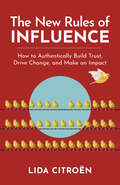
Leave the power tie at home. The old rules of influence don't work anymore.It's time to throw out the old…
rules of influence and become the leader you've always wanted to be.A new type of leader is emerging—one with a bold mission who empowers others through transparency and unwavering passion. Modern-day executive presence mandates levels of authenticity and honesty never before seen in the C-suite.Personal branding and reputation management expert, Lida Citroën guides leaders through this new paradigm of executive presence and influence. Through inspiring examples, compelling stories, and practical exercises, Citroën helps leaders tap into their passion, connect authentically with others, and create space for inclusivity and community.Greta Thunberg is a powerful example of a new paradigm leader. The Swedish teenager's influence arguably exceeds that of most CEOs or political leaders. The youngest person to be named Time's Person of the Year, she radically upended Swedish politics and world climate policy. Nothing about her conforms to the typical expectations of a leader's executive presence—her power comes from her absolute honesty and genuine passion to make the world a better place.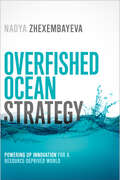
Par Nadya Zhexembayeva. 2014
We all know the proverb about teaching someone to fish, but if there are no fish left, knowing how to…
catch them won&’t do you any good. And that&’s the position businesses are in today. Resources are being depleted at an alarming rate and the cost of raw materials is rising dramatically. As a result, scholar and entrepreneur Nadya Zhexembayeva says, businesses need to make resource scarcity—the overfished ocean—their primary strategic consideration, not just a concern for their &“green&” division. Overfished Ocean Strategyoffers five essential principles for innovating in this new reality. Zhexembayeva shows how businesses can find new opportunities in what were once considered useless by-products, discover resource-conserving efficiencies up and down their value chain, transfer their expertise from physical products to services, and develop ways to rapidly try out and refine these new business models. She fills the book with examples of companies that are already successfully navigating the overfished ocean, from established corporations such as BMW, Microsoft, and Puma to newcomers such as Lush, FLOOW2, and Sourcemap. The linear, throwaway economy of today—in which we extract resources at one end, create products, and throw them away at the other—is rapidly coming to an end. In every industry, creative minds are learning how to make money by taking this line and turning it into a circle. Nadya Zhexembayeva shows how you can join them and avoid being left high and dry.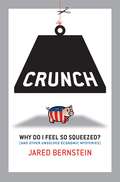
Par Jared Bernstein. 2008
Is Social Security really going bust, and what does that mean to me? If I hire an immigrant, am I…
hurting a native-born worker? Why does the stock market go up when employment declines? Should I give that homeless guy a buck? What’s a “living wage”? How much can presidents really affect economic outcomes? What does the Federal Reserve Bank really do? And even when some pundits say the economy’s sound, why do I still feel so squeezed? If you’d like some straight answers, premier economist Jared Bernstein is here to help. In Crunch he responds to dozens of questions he has fielded from working Americans, questions that directly relate to the bottom-line, dollars-and-cents concerns of real people. Chances are if there’s a stumper you’ve always wanted to ask an economist, it’s solved in this book. Bernstein is fed up with “Darth Vaders with PhDs” who use their supposed expertise to intimidate average citizens and turn economics into a tool for the rich and powerful. In the pages of Crunch, Bernstein lays bare the dark secret of economics: it’s not an objective scientific discipline. It’s a set of decisions about the best way to organize our society to produce and distribute resources and opportunities. And we all can, and must, participate in these decisions. “America is a democracy,” he writes. “And in a democracy all of us, not just the elites and their scholarly shock troops, get to weigh in on biggies like this.” To not weigh in, Bernstein insists, is a profoundly political act, one with damaging consequences. Our economy will be only as fair as we can make it. In this lively and irreverent tour through everyday economic mysteries, Bernstein helps us decode economic “analysis,” navigate through murky ethical quandaries, and make sound economicdecisions that reflect our deepest aspirations for ourselves, our families, and our country.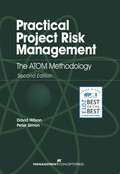
Par David Hillson. 2012
This second edition of the book reflects the authors' work to continually improve upon the model and to apply the…
methodology to a broader range of issues. The book includes:• An entirely new chapter on managing risk in programs, which is an important dimension in today's world of ever more complex initiatives• Updated material and methodology more closely aligned with relevant international standards• Emphasis on minimizing the threats and maximizing the opportunities to optimize achievement of your project goalsBased on sound principles and best practices, this book guides any member of the project management team in conducting risk management in a real-world environment.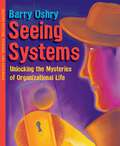
Par Barry Oshry. 2007
When breakdowns occur in organizational life, the tendency is to blame them on the personalities, motivations, and abilities of the…
individuals involved or on the specific characteristics of one’s organization. Barry Oshry demonstrates how everyday breakdowns stem from our failure to see how human systems shape our feelings about ourselves and our relationships with other individuals and groups. He shows how we can transform “system blindness” into system sight, enabling us to live and work together in productive partnership. Based on Oshry’s 30+ years of studying human interaction in social system life, Seeing Systems is profound in its implications while being easily accessible. In addition to illustrative cases and solid systems theory, the book is populated with pinballs; talking body parts; mysterious “swimmers”; amebocytes, slugs, and earthworms; dances of blind reflex; and tunnels of limited options. The result is a unique foundation for revolutionizing our understanding of system life. This new edition is revised throughout and features an extensive new section on having the wisdom and courage to face and work with the reality of uncertainty, a hopeful antidote to today’s righteous battles of certainty versus certainty. The new epilogue describes how Oshry is currently using theater, blogs, and podcasts to extend his multipronged revolution aimed at transforming system blindness into system sight.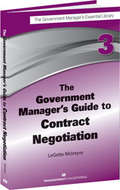
Par Legette McIntyre. 2013
The Government Manager's Guide to Contract Negotiation Federal managers often find themselves at the negotiating table, charged with reaching a…
solid, fair deal for their agency. Now, you can gain a competitive edge in even the most difficult negotiations with time-tested, effective tactics from a noted authority on federal negotiations. This guide will help you understand the negotiation process, plan for it, develop strategies and tactics, anticipate and counter the other side's strategies and tactics, and conclude and document the negotiation. Concise, accessible, and authoritative, this book offers a veritable arsenal of winning strategies that you and your team can use in your next negotiation.
Par Terrence M. O'Connor. 2007
A "back-to-basics" guide to government contract lawFinally! A plain-English presentation of the basic legal concepts of government contract law for…
professionals at any stage in their careers.Until now, anyone in the procurement field has had to trudge through dense and complex texts written in hard-to-follow "legalese" in their quest to understand procurement law. With Understanding Government Contract Law, they finally have a source of clear and concise explanations of the legal principles involved in government contract law, written by an authority on the subject.Part I of the book focuses on the unique problems facing each of the parties to a government contract – the contract officer and the contractor – and offers insight to the many roles played by the contract officer in the procurement process. Part II describes why and how the government contract is different from commercial contracts. Part III explores the ins and outs of a government contract lawsuit.The author presents key legal principles of government contract law by:• Stating a legal principle• Specifying where in the Federal Acquisition Regulation (FAR) that principle is found• Offering the rationale, context, and any public policy behind the principle• Describing, with case law examples, situations where the government applied the law correctly and situations where the government came to that conclusion incorrectly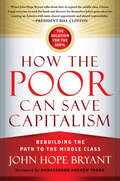
Par John Hope Bryant. 2015
John Hope Bryant, successful self-made businessman and founder of the nonprofit Operation HOPE, says business and political leaders are ignoring…
the one force that could truly re-energize the stalled American economy: the poor. If we give poor communities the right tools, policies, and inspiration, he argues, they will be able to lift themselves up into the middle class and become a new generation of customers and entrepreneurs. Raised in poverty-stricken, gang-infested South Central Los Angeles, Bryant saw firsthand how our institutions have abandoned the poor. He details how business loans, home loans, and financial investments have vanished from their communities. After decades of deprivation, the poor lack bank accounts, decent credit scores, and any real firsthand experience of how a healthy free enterprise system functions. Bryant radically redefines the meaning of poverty and wealth. (It's not just a question of finances; it's values too.) He exposes why attempts to aid the poor so far have fallen short and offers a way forward: the HOPE Plan, a series of straightforward, actionable steps to build financial literacy and expand opportunity so that the poor can join the middle class. Fully 70 percent of the American economy is driven by consumer spending, but more and more people have too much month at the end of their money. John Hope Bryant aspires to "expand the philosophy of free enterprise to include all of God's children" and create a thriving economy that works not just for the 1 percent or even the 99 percent but for the 100 percent. This is a free enterprise approach to solving the problem of poverty and raising up a new America.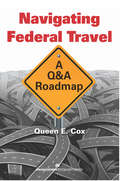
Par Queen E. Cox. 2012
Get the right directions for federal travel!Don't get lost in the tangled web of rules and regulations governing federal travel.…
Make sure you have the one guide that will put you on the road to being a knowledgeable and compliant government traveler— Navigating Federal Travel: A Q & A Roadmap.This essential reference is geared not only to government travelers and those authorizing and approving travel, but also to those who provide travel management services to government agencies. The guide is organized in question-and-answer format, similar to the Federal Travel Regulation (FTR), and is presented to be readily accessible and informative.The information is based on the author's years of experience as a federal travel manager as well as the FTR, Government Accountability Office and Civilian Board of Contract Appeals decisions, and pertinent legislation and mandates. As a supplement to the FTR, the guide includes examples of actual and potential situations the traveler may encounter before, during, and after approval of authorized travel.The book offers clear and concise information on:• How to determine the need for travel• How travel is authorized and by whom• How the employee pays for expenses incurred in performing official travel• How the employee is reimbursed for authorized travel and travel-related expenses.Navigating Federal Travel also includes coverage of best practices for the Agency/Organization Program Coordinator (A/OPC), who is responsible for managing the government travel charge card program. Appendices offer helpful websites and resources as well as special information for relocation.Get the right directions and follow the rules with Navigating Federal Travel: A Q & A Roadmap.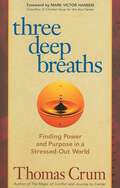
Par Thomas Crum. 2009
These days all of us lead hectic, stressful lives. And most of us react to difficult circumstances by struggling against…
them, which only creates more tension. Three Deep Breaths provides a welcome alternative--a simple technique that you can use, no matter how busy you are, to transform tough situations into positive, energizing experiences. It is a mind/body technique that combines the "cognitive-restructuring" capability of the brain (the ability to change our attitudes and perceptions of the world) with the calmness and presence of an aligned, centered state of being. Thomas Crum illustrates this radically simple technique through the story of Angus, who is struggling to break through the negative habits that lead to anger, exhaustion, and poor performance. We follow Angus as he learns to use the Three Deep Breaths to maintain clarity and purpose in the midst of seeming chaos, to redirect negative energy to more positive purposes. By working with our breath, by being aware of it and using it as a focusing tool, we can open up a whole new world of possibility. The quality of our lives depends not on whether or not we have conflicts but on how we respond to them. All it takes to change your life is Three Deep Breaths--which you can do in an instant, anywhere, at any time.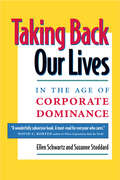
Par Suzanne Stoddard, Ellen Augustine. 2000
Reveals the profound impact of the global corporate economy on our daily lives Details 75 immediate and long-term Action Steps…
for empowering ourselves both individually and as a society Offers specific tips, ideas, and resources on how to pare down our lives and open up our time Provides questions for reflection that help readers to think in new ways about what matters most to them Corporate structures, products, and processes permeate our society -but what do they really mean to us in our daily lives? The bottom-line mentality that drives corporate America, say Ellen Augustine (formerly Schwartz) and Suzanne Stoddard, is creating a world unresponsive to human needs, corrosive to the democratic process, and destructive to the planet itself. Taking Back Our Lives in the Age of Corporate Dominance shows the links between our mundane everyday struggles and the global corporate economy, image-driven media, and the relentless pace which consumes us all. And it tells us how we can change things by transforming both our work and leisure. The authors use hard-hitting examples and illuminating personal vignettes about confronting fear, anger, death, family problems, and the stultifying effects of staying in the "comfort zone." They detail over 75 steps for personal and societal actions-some quick and immediate, others in-depth and long term-for retaking control of our lives. The authors include provocative questions for reflection that shock, prod, and jump-start the reader into thinking about what matters most to them. Deeply moving, outrageous, encouraging, compelling, and inspiring, Taking Back Our Lives in the Age of Corporate Dominance blends unrelenting candor with the comfort of real-life stories of hope-and ultimately shows us that choice is the most important tool we have for reviving our lives and our world.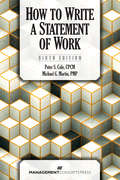
Par Michael G. Martin PMP, Peter S. Cole CPCM. 2012
The standard on government statements of work just got better!How to Write a Statement of Work has been a standard…
reference for government employees and contractors for many years. Now, with this sixth edition, it is even more relevant and useful. Based on the excellent foundation laid by the late Peter Cole, Michael Martin has updated and added material to guarantee this handbook's place in the list of "must haves" for working with government contracts. As in the earlier editions, the emphasis is on providing practical, detailed guidance on writing and preparing a description of government requirements, whether a statement of work (SOW), a performance work statement (PWS), or a statement of objectives (SOO).Among the many additions to this sixth edition are updates to reflect the current definition of an SOO as well as references and guidance regarding the development and application of the SOO. There is a new chapter on why change management is so important on projects, legal precedents supporting change management, and how to identify when a change occurs using the SOW. This new chapter also includes information on the federal government's Standard Form 30 (SF30) to provide perspective on how change orders are used and applied in the federal government. If you are working in government contracting in any capacity, you should have this book on hand!